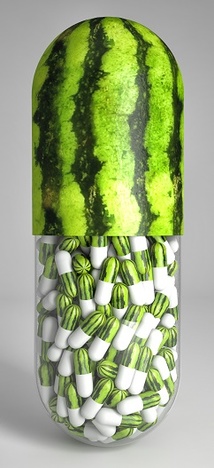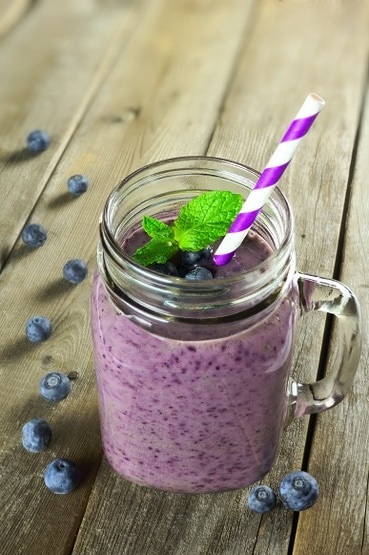See how your nutritional supplements compare with others:
- over 1,300 US and Canadian products examined
- 18 Health Support Criteria enhanced to accommodate new research findings
- new Health Support Criterion on Immune Support added
- Health Support Profile Graphs provided for the highest-rated product from each of the top 25 brands by market share according to Euromonitor International.
OUR CRITERIA TO SELECT A HIGH QUALITY VITAMIN AND MINERAL SUPPLEMENT:
Although this guide is intended for supplements manufactured in North America, we are impressed by the science and the studies on which it is based. We are aware that the criteria for the European market supplements differ but we also know that many people use the American-made products.
Science is a truth that is not limited to one country or a continent, but for all of us.
That's why we choose to present the 18 criteria found in the guide because we think you need to be informed on the new discoveries in molecular nutrition. However we have also summarized for you, in general, our criteria of a high quality supplement.
Science is a truth that is not limited to one country or a continent, but for all of us.
That's why we choose to present the 18 criteria found in the guide because we think you need to be informed on the new discoveries in molecular nutrition. However we have also summarized for you, in general, our criteria of a high quality supplement.
1. IT SHOULD BE CONSUMED AT LEAST TWICE A DAY AS PER THE DOSAGE SUGGESTED BY THE COMPANY.
We are not fervent of supplements having only one capsule as a daily dose, since a single capsule may not contain everything you need within 24 hours. In addition, THE MORE COMPLETE ARE THE SUPPLEMENTS, THE HIGHER THE RECOMMENDED NUMBER OF CAPSULES ARE NEEDED. WHY ?
Imagine that all active substances including antioxidants must be compressed into a single tablet!
The more they are, the more space they need to occupy! This fact justify multiple tablets!
Imagine that all active substances including antioxidants must be compressed into a single tablet!
The more they are, the more space they need to occupy! This fact justify multiple tablets!
2. CERTIFICATIONS: WHAT CERTIFICATIONS DOES THE COMPANY HAVE?
For us, the important certifications are those from third parties (independent laboratories recognized worldwide) for exemple : NSF INTL, Consumer Lab, Informed choice, ISO, FDA, USP, NPA.
All these laboratories and institutions are recognized worldwide for their reliable reputation certifying products for Pharmaceutical Standards, banned substances, toxic substances, facilities and the accuracy of the label (Only what is written on label must be reflected in the tablet).
Companies with these kind of certifications will be happy to show them to you on their website!
Certifications such as : Halal, Kosher, Non-GMO, Vegan, Eco, Organic, or tested for different allergens, eventhough interesting, does not have the same importance as they are aimed at a target audience, only a part of the population just to respect their diet or beliefs.
All these laboratories and institutions are recognized worldwide for their reliable reputation certifying products for Pharmaceutical Standards, banned substances, toxic substances, facilities and the accuracy of the label (Only what is written on label must be reflected in the tablet).
Companies with these kind of certifications will be happy to show them to you on their website!
Certifications such as : Halal, Kosher, Non-GMO, Vegan, Eco, Organic, or tested for different allergens, eventhough interesting, does not have the same importance as they are aimed at a target audience, only a part of the population just to respect their diet or beliefs.
3. THE NATURAL FORM OF VITAMIN E AND THE VITAMIN D3
Supplements should contain the natural form of vitamin E: D-alpha-tocopherol instead of its synthetic isomeric forms: D-L-alpha tocopherol.
Vitamin D3 and not D2 should be reflected in the supplement. It is much more effective.
Please read the guide criteria for more info.
Vitamin D3 and not D2 should be reflected in the supplement. It is much more effective.
Please read the guide criteria for more info.
4. NO IRON IN MULTIVITAMIN SUPPLEMENTS
NO IRON in multivitamin supplements because there is a risk of toxicity and accumulation.
Iron supplements should be prescribed by your doctor only.
Iron supplements should be prescribed by your doctor only.
5. THE MINERALS SHOULD BE IN ORGANIC FORM TO ENABLE GREATER BIOAVAILABILITY
Supplements should contain mainly minerals in organic forms.
For example: GLUCONATE, CITRATE, PICOLINATE, FUMARATE, etc, instead of sulfate, oxide, carbonate, chloride, phosphate, all of which are inorganic form.
It is very important that the company write the biochemical formulas on the labels so that consumers are well informed.
For example: GLUCONATE, CITRATE, PICOLINATE, FUMARATE, etc, instead of sulfate, oxide, carbonate, chloride, phosphate, all of which are inorganic form.
It is very important that the company write the biochemical formulas on the labels so that consumers are well informed.
6. ANTIOXIDANTS AND PHYTONUTRIENTS
Although we are talking about multivitamins, it is very important that they contain a variety of antioxidants and phytonutrients that have been scientifically proven to protect the cells against oxidative stress leading to various diseases.For example: The bioflavonoids, turmeric, lipoic acid alpha, lycopene, green tea extract, coenzyme Q10, zeaxanthin and lutein, and more. ALSO PREFER STANDARDIZED EXTRACTS.
NUTRISEARCH COMPARATIVE GUIDE TO NUTRITIONAL SUPPLEMENTS™
18 CRITERIA TO CHOOSE A HIGH QUALITY SUPPLEMENT
PLEASE NOTE: THIS ARTICLE HAS BEEN UPDATED WITH THE RELEASE OF THE
NUTRISEARCH COMPARATIVE GUIDE TO NUTRITIONAL SUPPLEMENTS™, 5TH CONSUMER EDITION
http://www.nutrisearch.ca/criteria.html
18 CRITERIA TO CHOOSE A HIGH QUALITY SUPPLEMENT
PLEASE NOTE: THIS ARTICLE HAS BEEN UPDATED WITH THE RELEASE OF THE
NUTRISEARCH COMPARATIVE GUIDE TO NUTRITIONAL SUPPLEMENTS™, 5TH CONSUMER EDITION
http://www.nutrisearch.ca/criteria.html
1. COMPLETNESS
|
Does the product contain the full spectrum of nutrients and nutrient categories listed in the Blended Standard and considered essential for optimal health? The human body requires several vitamins and vitamin-like substances, a diverse group of plant-based antioxidants, numerous trace elements and minerals, and several essential fatty acids. Many of these substances can only be obtained through the diet. In all, 47 essential nutrients and nutrient categories comprise our Blended Standard—the definitive benchmark upon which our analysis is built. This criterion assesses whether the product contains all of the Blended Standard nutrients. |
2. POTENCY
|
For each nutrient in the product, what is the level of potency relative to the potency for that nutrient in the Blended Standard?
The potencies for the 47 essential nutrients and nutrient categories used in our Blended Standard reflect the need for supplementation with some nutrients at levels considerably higher than their Dietary Reference Intakes (DRIs). This criterion assesses how much of each nutrient the product contains compared to the Blended Standard. |
3. MINERAL FORMS
For those minerals included in a formulation, how many are found in their most bioavailable forms as amino-acid chelates or organic-acid complexes?
Minerals :
While minerals comprise only 4% to 5% of our total body weight, life would not be possible without them.
This criterion examines mineral forms (mineral salts, chelated minerals, or organic-acid/mineral complexes), which affect the ability of the minerals to be absorbed into the blood, making them available to our cells.
Minerals :
- are essential components of our cells
- serve as cofactors in the thousands of enzyme-controlled reactions that power the machinery of the cell.
- also form critical structural components
- regulate the action of nerves and muscles
- maintain the cell's osmotic (water) balance
- modulate the pH (acidity) of the cell and extracellular fluids.
While minerals comprise only 4% to 5% of our total body weight, life would not be possible without them.
This criterion examines mineral forms (mineral salts, chelated minerals, or organic-acid/mineral complexes), which affect the ability of the minerals to be absorbed into the blood, making them available to our cells.
4. VITAMIN E FORM
|
Does the product contain the natural (d) isomer of alpha tocopherol or does the product contain the less useful synthetic (d/l) isomers of alpha tocopherol?
Does the product contain gamma tocopherol (or a mixture of gamma, beta, and delta tocopherols) at a potency of up to one-half the potency of alpha tocopherol in the same product? What is the potency of gamma tocopherol or mixed tocopherols in the product, compared to the potency for gamma tocopherol in the Blended Standard? Vitamin E comes in many different forms, each of which has important benefits in cellular function. In its natural form, the most common type of vitamin E is d-alpha tocopherol. Synthetic vitamin E (commonly found in supplements as d/l-alpha tocopherol) is only half as effective as the natural form. Another form of vitamin E, gamma tocopherol, possesses distinctive chemical properties that differentiate it from alpha tocopherol. Studies show that gamma tocopherol reduces chronic inflammation and protects against cancers of the colon and prostate better than its alpha analogue. This criterion assesses the product for the various forms of vitamin E and their bioactivity. |
5. IMMUNE SUPPORT
Does the product contain vitamin D and iodine at the potencies described in the Blended Standard?
Does the product also contain beta carotene and vitamin A, vitamin C, vitamin E, zinc, selenium, and the B-vitamins B1, B2, B5 (pantothenic acid), B6, B12 and folic acid at the potencies established in the Blended Standard?
Does the product also contain beta carotene and vitamin A, vitamin C, vitamin E, zinc, selenium, and the B-vitamins B1, B2, B5 (pantothenic acid), B6, B12 and folic acid at the potencies established in the Blended Standard?
|
An explosion of research over the past decade has uncovered vitamin D as a vital component to our immune systems. Working in conjunction with other micronutrients, vitamin D can help protect us against many of the most common degenerative diseases,including heart disease, stroke, cancer, multiple sclerosis, dementia, and many others. This criterion assesses the product for vitamin D levels and the presence of other nutrients that boost immune response. Another nutrient recently discovered as vital to immune support is iodine. The high iodine concentration of the thymus gland is prima facia evidence of the important role played by iodine in the immune system—a role likely related to the element's innate antioxidant powers. Many other nutrients, including vitamin A, vitamin C, vitamin E, zinc, selenium, and the B-vitamins B1, B2, B5 (pantothenic acid), B6, B12 and folic acid, are also essential to a healthy immune system. This criterion assesses the product for vitamin D and iodine levels and for the presence of these other nutrients that boost the immune response. |
6. ANTIOXIDANT SUPPORT
|
Does the product contain vitamin C, vitamin E (including alpha-tocopherol and gamma-tocopherol, or mixed tocopherols), vitamin A, beta-carotene, alpha-lipoic acid, lycopene, coenzyme Q10, selenium and iodine at potencies up to 100% of the potencies for these nutrients in the Blended Standard?
The weight of scientific evidence supports supplementation with antioxidants in the prevention and treatment of many of today's common ailments. As was anticipated decades ago by leading researchers high-dose supplementation with antioxidants has gained a significant role in the prevention and treatment of many of today's common ailments. However, antioxidants do not work in isolation. For this reason, it is vital to supplement with a wide spectrum of antioxidants—an approach that is reflective of what occurs in nature. This criterion examines the nutrients that help to prevent or repair cellular damage caused by oxidation. |
7. BONE HEALTH
|
Does the product contain vitamin D, vitamin K, vitamin C, vitamin B6, vitamin B12, folic acid, boron, calcium, magnesium, silicon, and zinc at potencies up to 100% of the potencies for these nutrients in the Blended Standard? As living tissue, healthy bones require at least 24 bone-building materials, including several vitamins, minerals, trace elements, and protein. The most important minerals are calcium, magnesium, phosphorus, and potassium; equally important is the balance between these minerals. This criterion examines the nutrients in a product that assist in bone remodeling, a process vital in warding off osteoporosis and other diseases that weaken the skeletal framework. |
8. HEART HEALTH
|
Does the product contain vitamin D, iodine, vitamin E (including alpha-tocopherol and gamma-tocopherol, or mixed tocopherols), beta-carotene, coenzyme Q10, calcium, magnesium, l-carnitine or acetyl-l-carnitine, procyanidolic oligomers (PCOs), phenolic compounds, and lycopene at potencies up to 100% of the potencies for those nutrients and nutrient categories in the Blended Standard?
Individuals with high dietary intakes of antioxidant vitamins, certain minerals, and several plant-based flavonoid compounds exhibit a lower-than-average risk of cardiovascular disease. This criterion examines several nutrients, including the recently discovered cardioprotective powerhouses—iodine and vitamin D—that are known to benefit the heart and cardiovascular system by reducing oxidative stress and suppressing inflammation. |
9. LIVER HEALTH (DETOXIFICATION)
|
Does the product contain iodine, vitamin C, n-acetyl-cysteine (including cysteine), selenium, vitamin B2, and vitamin B3 (including niacin and niacinamide), at potencies up to 100% of the potencies for these nutrients in the Blended Standard?
Intracellular glutathione status is a sensitive indicator of cellular health and of the cell's ability to resist toxic challenges. An important water-phase antioxidant, glutathione is one of three vital free radical scavenging mechanisms in the cell. It is also the body's pre-eminent detoxicant in the liver. While dietary glutathione is efficiently absorbed in the gut, the same is not the case for nutritional supplementation. Iodine is another important nutrient for liver health and detoxification.Iodine's ability to staunch the potential damage of hydrogen peroxide provides support for the work of the glutathione peroxidase enzyme system in helping to remove these toxic agents from the body. This criterion examines those nutrients that optimize levels of glutathione and enhance liver function. |
10. METABOLIC HEALTH (GLUCOSE CONTROL)
|
Does the product contain vitamin B3 (including niacin and niacinamide), vitamin B6, vitamin B12, vitamin C, vitamin E (including alpha-tocopherol and gamma-tocopherol, or mixed tocopherols), vitamin D, iodine, biotin, coenzyme Q10, chromium, magnesium, manganese, and zinc at potencies up to 100% of the potencies for these nutrients in the Blended Standard?
Diabetes is a chronic disorder of carbohydrate, fat, and protein metabolism. The disease begins as a constellation of metabolic changes associated with chronically high insulin levels and elevated blood-sugar levels, a condition known as Insulin Resistance. |
The development of insulin resistance is multi-factorial; however, complications associated with this pre-diabetic disorder can be resolved effectively through conscientious dietary and lifestyle changes, including supplementation with several vitamins and minerals essential for metabolic support and the close regulation of glucose metabolism.
This criterion examines those nutrients that help the body handle its daily sugar load, keeping systems responsive to insulin and restoring lost insulin sensitivity.
This criterion examines those nutrients that help the body handle its daily sugar load, keeping systems responsive to insulin and restoring lost insulin sensitivity.
11. OCULAR HEALTH
|
Does the product contain the antioxidants, vitamin C, vitamin E (including alpha and gamma tocopherol, or mixed tocopherols), vitamin A (including beta-carotene) and the carotenoids, lutein and zeaxanthin, at potencies up to 100% of the potencies for these nutrients in the Blended Standard?
Good eyesight and the prevention of cataracts and macular degeneration require adequate levels of several nutrients known to reduce the level of oxidative stress in the retina and lens of the eye. |
12. METHYLATION SUPPORT
|
Does the product contain vitamin B2, vitamin B6, vitamin B12, folic acid, and trimethylglycine at potencies up to 100% of the potencies for these nutrients in the Blended Standard?
Over 40 major clinical studies confirm that high homocysteine levels are a predictive marker for heart disease, stroke, and peripheral artery disease. In fact, up to 40% of patients with heart disease express elevated levels of homocysteine. Deficiencies in certain B-complex vitamins are known to increase circulating levels of homocysteine; conversely, supplementation with these nutrients can significantly reduce circulating homocysteine by converting it to harmless methionine and cysteine. This criterion looks at those nutrients required for the body to reduce homocysteine levels in the blood. |
13. LIPOTROPIC FACTORS
Does the product contain the important lipotropic factors, choline or lecithin (phosphatidylcholine), and inositol at potencies up to 100% of the potencies for these nutrients in the Blended Standard?
|
The liver and the brain are two primary targets for the accumulation of fat-soluble toxins, including pesticides and heavy metals (such as lead). Within the liver, choline and inositol assist with the elimination and removal of these noxious compounds through their ability to mobilize fats and bile. Known as lipotropic (fat-moving) factors, these agents have a long history of use within the naturopathic community, helping to restore and enhance liver function and treat a number of common liver ailments. |
This criterion examines those lipotropic agents that help the liver mobilize fats stores and remove toxins.
14. INFLAMMATION CONTROL
|
Does the product contain eicosapentaenoic and docosahexaenoic acids, linolenic acid, gamma-tocopherol, alpha-lipoic acid, vitamin C, vitamin D, iodine, flavonoids, procyanidolic oligomers, and the phenolic compounds from green tea, olive and turmeric extracts, at potencies up to 100% of the potencies for these nutrients or nutrient categories in the Blended Standard?
Chronic inflammation, frequently induced by uncontrolled oxidative stress, is a principal mechanism by which degenerative disease takes root. Changing the balance within the body to favour the production of anti-inflammatory chemical messengers and lower the levels of inflammation is therefore an important preventive measure. This criterion examines the nutrients responsible for reducing inflammation at the cellular level, such as the omega-3 oils—particularly those found in fish oil (eicosapentaenoic and docosahexaenoic acids, or EPA and DHA) and alpha-linolenic acid (flaxseed and other oils). Recent evidence shows that Vitamin D also expresses potent anti-inflammatory actions. As well, iodine—likely in its molecular form—exhibits anti-inflammatory and anti-proliferative activities that are important factors in determining cardiovascular health, 6-9 and in reducing the risk of inflammatory cancers of the breast, stomach, endometrium, and ovaries.ui de cancer inflamator de la nivelul sanilor, stomacului, endometrului si ovarelor. |
15. GLYCATION CONTROL
|
Does the product contain l-carnosine, vitamin E (including alpha-tocopherol and gamma-tocopherol, or mixed tocopherols), vitamin C, and alpha-lipoic acid at potencies up to 100% of the potencies for those nutrients or nutrient categories listed in the Blended Standard?
Aging—the outcome of the conflict between chemistry and biology in living systems—introduces chronic, cumulative chemical modifications that compromise the structure and function of important biomolecules within our cells. We now know that changes to these molecular structures, driven by unrelenting oxidative stress, can render them dysfunctional. Their accumulation, the detritus of an ongoing oxidative war within the cell, is a hallmark of the aging process. This criterion examines those nutrients that help slow the progress of glycation. |
16. BIOFLAVONOID PROFILE
|
Does the product contain a mixture of bioflavonoids (including citrus and other flavonoids, billberry flavones and related extracts, hesperidin, quercetin, quercitrin, rutin, soy isoflavones, and silymarin and related milk thistle extracts) and PCOs (including grape seed and grape seed extract, hawthorne berry and hawthorne berry extract, pine bark and pine bark extract, pycnogenol and resveratrol) at potencies up to 100% of the recommended potencies for mixed bioflavonoids and PCOs in the Blended Standard?
The flavonoids are known as "nature's biological response modifiers" because of their ability to alter the body's reactions to allergens, viruses and carcinogens, and to protect cellular tissues against oxidative attack. Flavonoids, found in the edible pulp of many fruits and vegetables, impart a bitter taste when isolated. Citrus fruits, such as oranges, lemons, limes, grapefruit, and kiwi, are particularly rich sources of flavonoids. This criterion examines the bioflavonoid family of nutrients, which works throughout the body to attack free radicals, suppress inflammation, and support a myriad of bodily functions. |
17. PHENOLIC COMPOUND PROFILE
|
Does the product contain phenolic compounds (polyphenolic acids and their derivatives, including cinnamon bark and cinnamon bark extract, cranberry and cranberry extract, curcumin, fenugreek, ginger and gingerols, green tea leaf and green tea extracts, olive fruit and olive extracts, papaya, pomegranate fruit and pomegranate extract, rosemary, and turmeric rhizome) at the potency for this nutrient category established in the Blended Standard?
The weight of scientific evidence supporting the health benefits of polyphenols is immense. They are powerful free radical antagonists, recognized for their ability to reduce cardiovascular disease and cancer, and they demonstrate potent anti-inflammatory, anti-viral, anti-bacterial, anti-allergic, anti-hemorrhagic, and immuno-enhancing properties. The most intensely studied of the phenolic compounds include those isolated from: turmeric, a perennial herb of the ginger family and a major ingredient in curry; green tea, a rich source of compounds called catechins; and extracts from the fruit of the olive tree. |
This criterion examines these specific phenolic compounds, all of them known to be exceptionally potent free radical antagonists.
18. POTENTIAL TOXICITIES
|
Does the nutritional supplement contain vitamin A and iron (which is no longer included in the Blended Standard)? Does the potency of vitamin A exceed 100% of the potency for that nutrient in the Blended Standard? Does the potency of iron exceed 5 mg/day?
In order to optimize its preventive benefits, the strategy of nutritional supplementation is to encourage long-term use. Consequently, there exists a potential risk for consumers with regard to the cumulative toxicity of particular nutrients. Most nutrients used in nutritional supplements have a high degree of safety; however, some nutrients require a degree of prudence when it comes to long-term use. Both iron and vitamin A (retinol) can become toxic when taken in high doses over a long period. Accidental overdose of iron-containing supplements is, in fact, a leading cause of fatal poisoning in children, and too much vitamin A during pregnancy can cause birth defects. Vitamin A is available, safely, as beta carotene, while adequate iron is easily obtained, for most people, from a variety of foods. This criterion examines the levels of pre-formed vitamin A (retinol) and iron in the product and penalizes the product rating if it contains too much of either nutrient. |
REFERENCES:
- Kupper FC, Carpenter LJ, McFiggans GB et al. Iodide accumulation provides kelp with an inorganic antioxidant impacting atmospheric chemistry. Proc Natl Acad Sci U S A 2008;105:6954-6958.
- Patrick L. Iodine: deficiency and therapeutic considerations. Altern Med Rev 2008;13:116-127.
- Venturi S, Venturi M. Iodine in evolution of salivary glands and in oral health. Nutr Health 2009;20:119-134.
- Murray MT and Pizzorno J. Immune Support. Encyclopedia of Natural Medicine. Prima Health, Rocklin CA; 1998;145-160.
- Crary EJ, McCarty MF. Potential clinical applications for high-dose nutritional antioxidants. Med Hypotheses 1984;13:77-98.
- Cacace MG, Landau EM, Ramsden JJ. The Hofmeister series: salt and solvent effects on interfacial phenomena. Q Rev Biophys1997;30:241-277.
- Hatefi Y, Hanstein WG. Solubilization of particulate proteins and nonelectrolytes by chaotropic agents. Proc Natl Acad Sci U S A1969;62:1129-1136.
- Hoption Cann SA, van Netten JP, van NC. Iodized salt and hypertension. Arch Intern Med 2002;162:104-105.
- Hoption Cann SA. Hypothesis: dietary iodine intake in the etiology of cardiovascular disease. J Am Coll Nutr 2006;25:1-11.
- Clur A. Di-iodothyronine as part of the oestradiol and catechol oestrogen receptor--the role of iodine, thyroid hormones and melatonin in the aetiology of breast cancer. Med Hypotheses 1988;27:303-311.
- Thomas BS, Bulbrook RD, Goodman MJ et al. Thyroid function and the incidence of breast cancer in Hawaiian, British and Japanese women. Int J Cancer 1986;38:325-329.


















